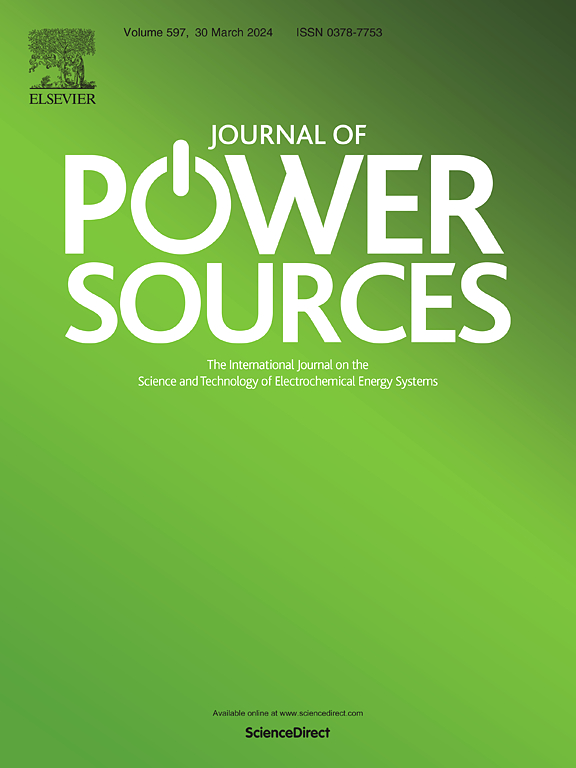Redox molecule modified graphene hydrogel with structure controllable for high-performance aqueous zinc-ion hybrid capacitors via utilizing hydrothermal fluid behavior
IF 8.1
2区 工程技术
Q1 CHEMISTRY, PHYSICAL
引用次数: 0
Abstract
Redox Molecule modified graphene-based materials exhibit excellent electrochemical performance due to the synergistic effect of pseudocapacitance and double layer energy storage mechanism in aqueous zinc-ion hybrid capacitors (AZIHCs). Herein, the 2, 6-Diaminoanthraquinone (DQ) modified flexible graphene hydrogel materials (DQ-FGH) with controllable structure are prepared via utilizing hydrothermal fluid behavior. Specifically, the temperature difference inside the DQ@GO suspension can cause convection in hydrothermal processes. The convection form of the suspension is regulated by controlling the volume of the suspension. Thus the DQ@GQ nanosheets can be reduced and assembled into the DQ-FGH films with different structures during convection. The prepared films show an excellent specific capacitance of 317.25 F g−1 (@0.2 A g−1) and a promising rate performance, which exceeds unmodified graphene-based material by 35.7 %. When the mass loading is closed to commercial level, the areal capacitance of the DQ-FGH films can reach 1850 mF cm−2. Moreover, the flexible AZIHCs based on the DQ-FGH films also possess good mechanical stability and electrochemical performance, proving good application prospects.

求助全文
约1分钟内获得全文
求助全文
来源期刊

Journal of Power Sources
工程技术-电化学
CiteScore
16.40
自引率
6.50%
发文量
1249
审稿时长
36 days
期刊介绍:
The Journal of Power Sources is a publication catering to researchers and technologists interested in various aspects of the science, technology, and applications of electrochemical power sources. It covers original research and reviews on primary and secondary batteries, fuel cells, supercapacitors, and photo-electrochemical cells.
Topics considered include the research, development and applications of nanomaterials and novel componentry for these devices. Examples of applications of these electrochemical power sources include:
• Portable electronics
• Electric and Hybrid Electric Vehicles
• Uninterruptible Power Supply (UPS) systems
• Storage of renewable energy
• Satellites and deep space probes
• Boats and ships, drones and aircrafts
• Wearable energy storage systems
文献相关原料
公司名称
产品信息
阿拉丁
2, 6-Diaminoanthraquinone (DQ)
阿拉丁
Natural flake graphite powder
 求助内容:
求助内容: 应助结果提醒方式:
应助结果提醒方式:


